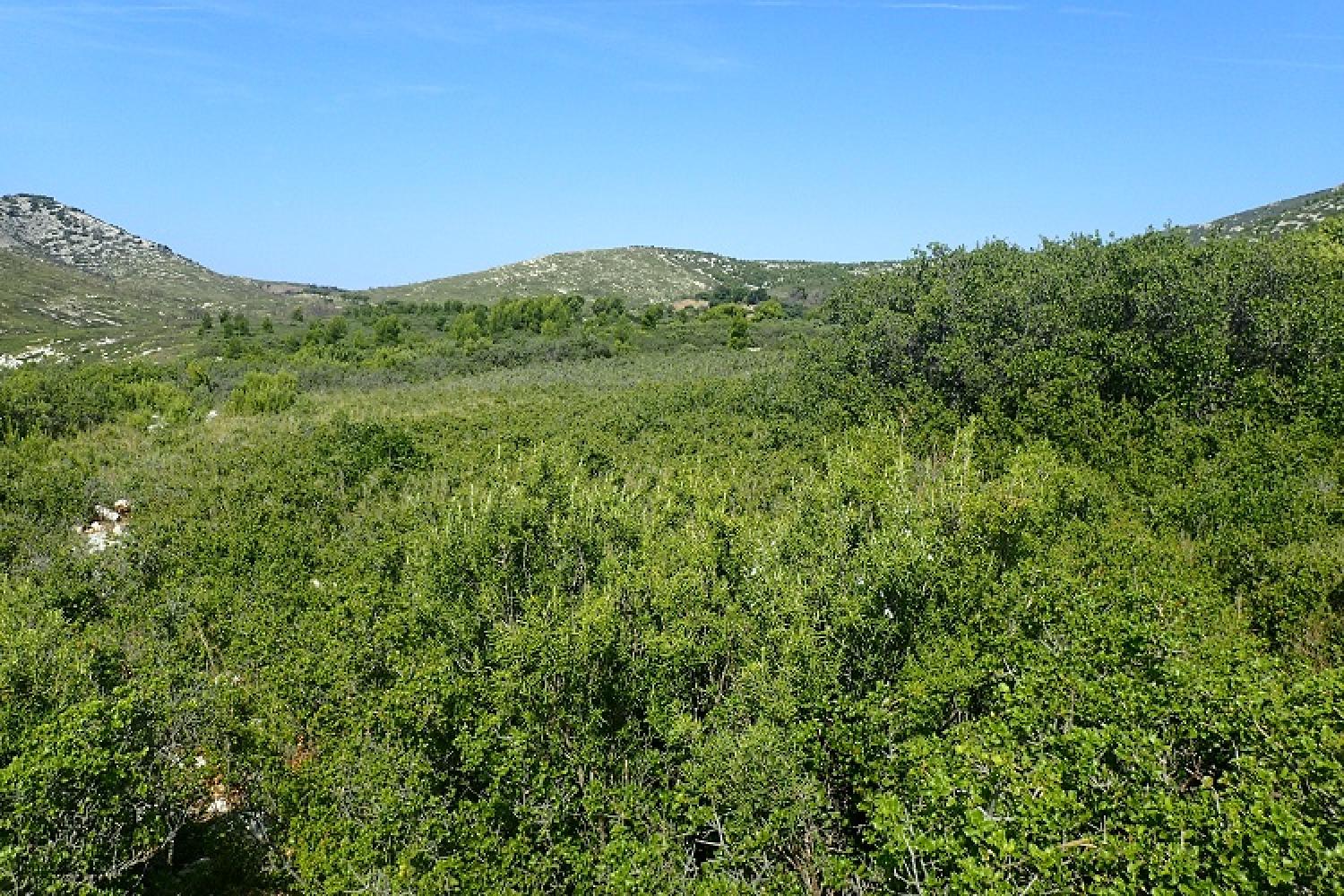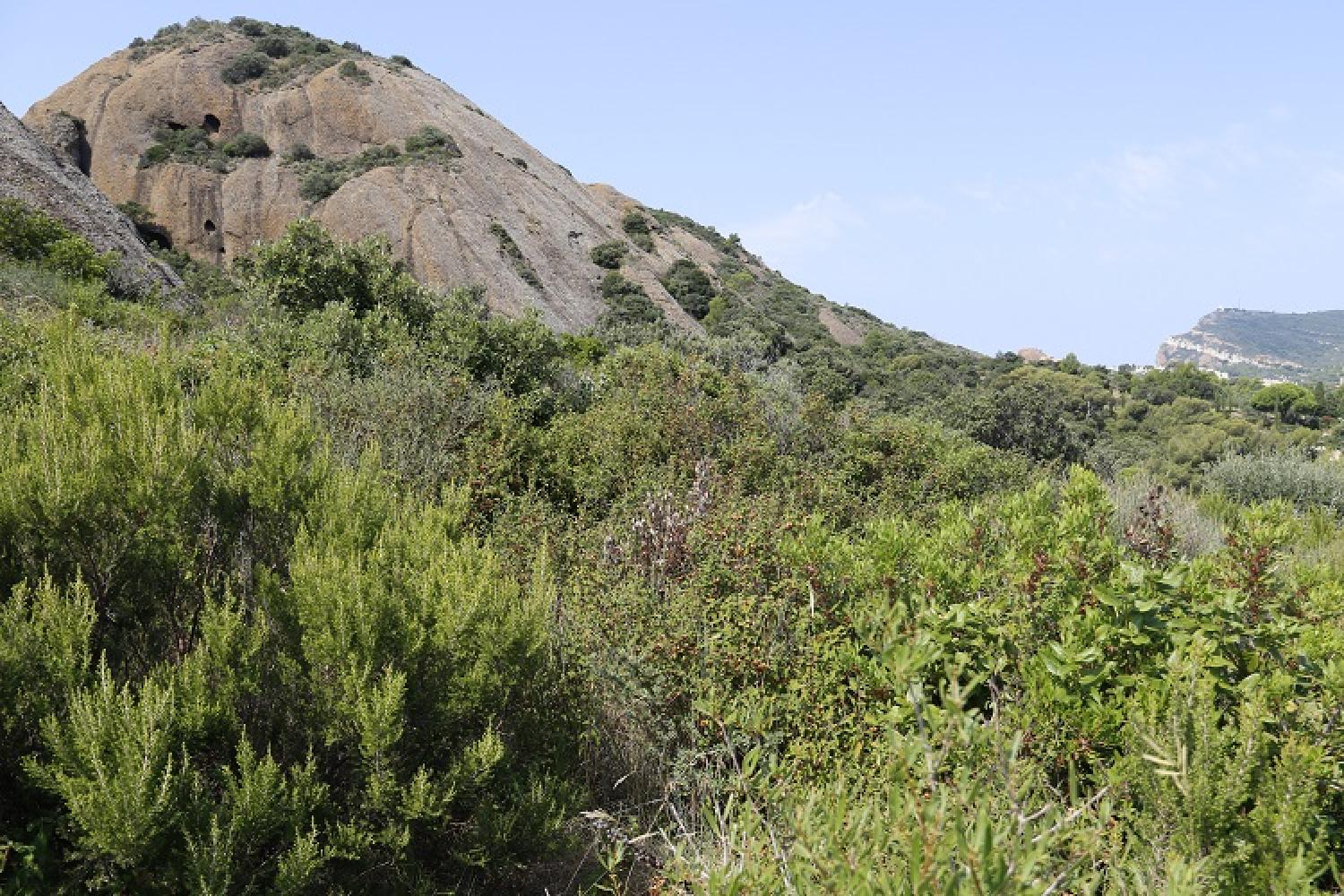Description
The garrigue and maquis scrubland are formed from low and dense vegetation, widespread in the Calanques, which is often impenetrable, dominated by bushes and shrubs that are resistant heat. They can be found in regions with a Mediterranean climate. These types of natural habitats develop on open land following a fire or when human activity has ceased (logging, decline in farming).
- The Garrigue scrubland grows on limestone soil. The vegetation is low and sparse. Several mammals, reptiles and birds live in it. This mass of vegetation can be found in the Calanques, from Marseilles to Cassis. The main species that grow here are the Common gorse (Ulex parviflorus), Prickly juniper (Juniperus oxycedrus) , Rosemary , Kermes oak , Rock rose (Cistus albidus) , Common smilax (Smilax aspera) , Thyme, Shrubby globularia, ”Aphyllanthe de Montpellier” (Aphyllanthes monspeliensis) , as well as Mediterranean false brome (or baouque) which make up the grassy areas in the Garrigue’s open areas. Its name comes from the Gallic word “garric”, “garrigo” in Provençal, which means the Kermes oak , and which by association came to characterise the areas where this tree grows.
- The maquis scrubland grows on acid soil (metamorphic rocks, shale, sandstone, etc.). It vegetation is dense and forms thorny and indissociable thickets which is where the French expression, “prendre le maquis” (take the maquis) comes from, meaning to hide from the authorities. The characteristic plant species that grow here are the Strawberry tree (arbutus unedo) , Tree heather (Erica arborea) , Thorny broom (cytisus spinosa) , French lavender (Lavandula stoechas), Montpellier cistus (Cistus monspeliensis) , le Rosemary , Myrtle (Myrtus) .


